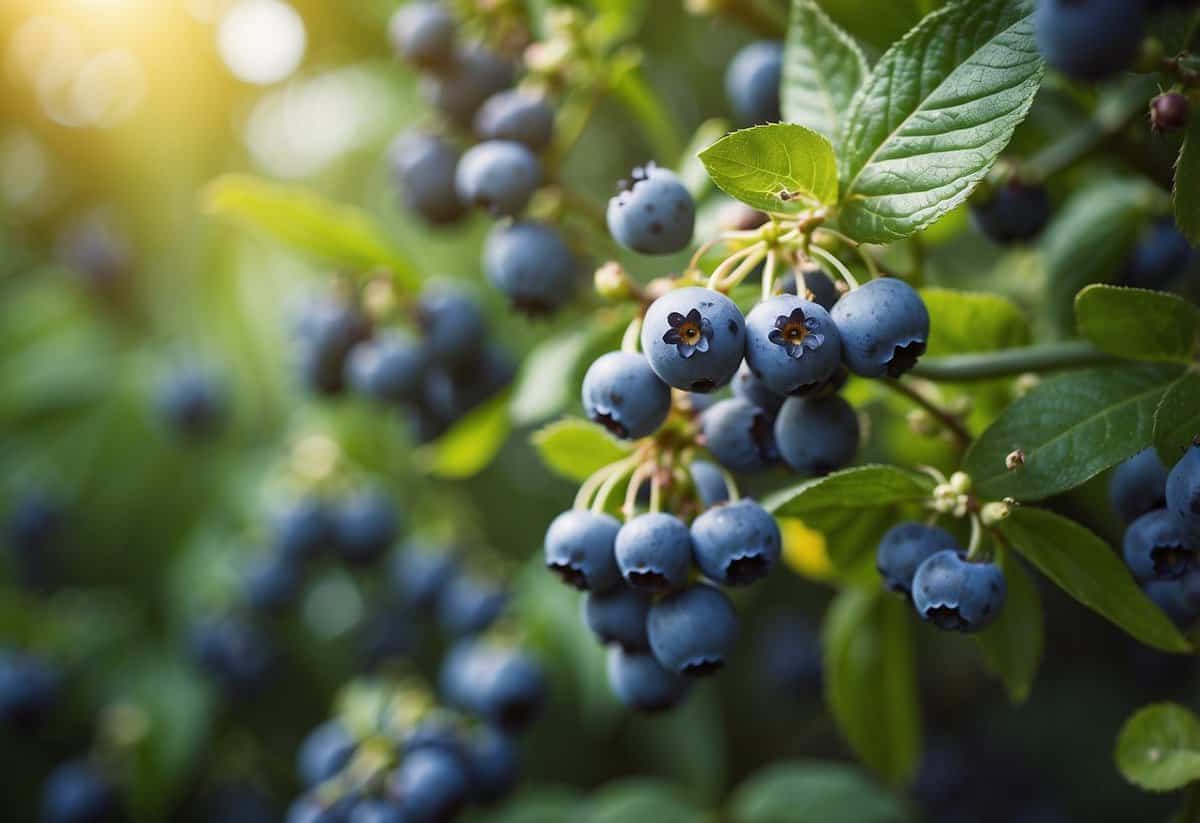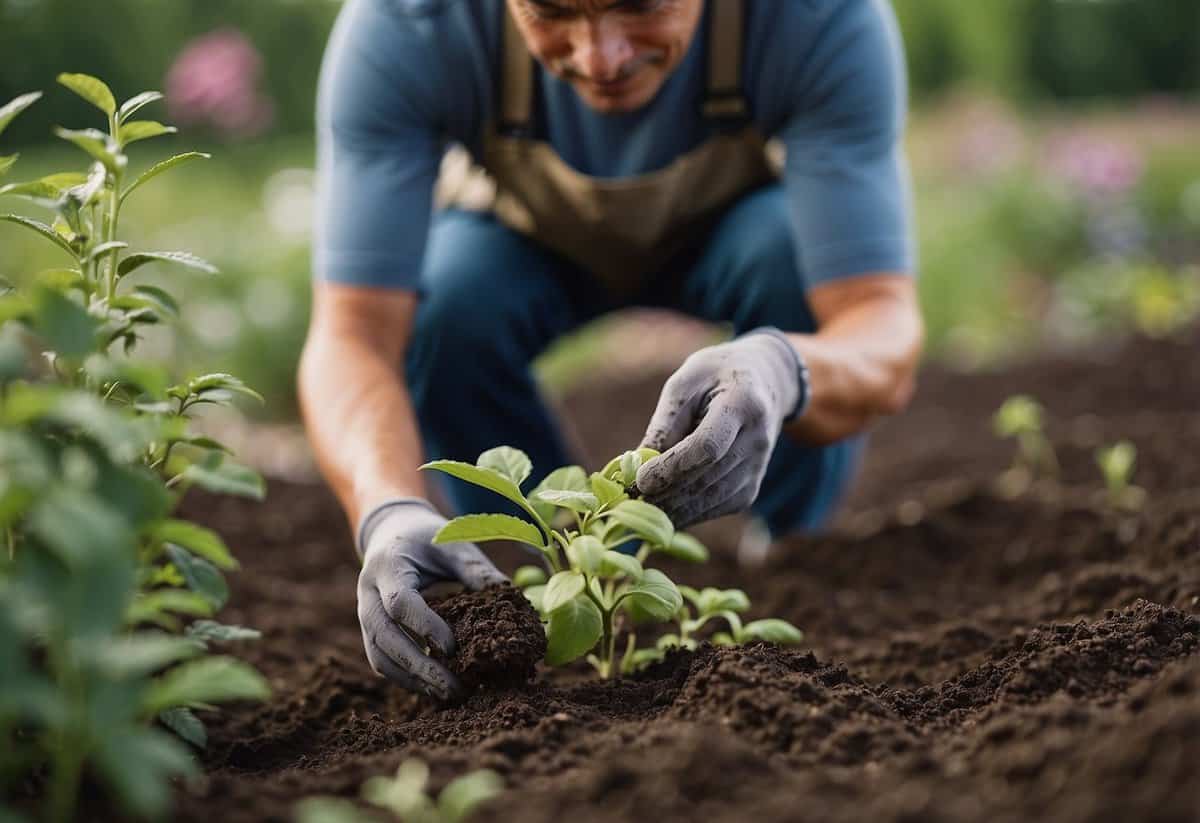Blueberry Garden Tips: Grow Juicy Berries Easily
Gardening blueberries can be a rewarding experience that provides you with delicious and nutritious fruit. Whether you’re a seasoned gardener or new to the world of blueberries, understanding how to properly plant and care for these bushes is essential. What are the key steps to ensure your blueberries thrive?

By choosing the right location and providing the correct soil conditions, you can see your blueberry plants flourish for years. With a few handy tips and tricks, you can enjoy a plentiful harvest right from your garden.
1) Choose the Right Blueberry Variety

Selecting the right blueberry variety is key for a bountiful harvest. First, consider your local climate. Some varieties thrive in colder areas, while others do well in warmer zones.
Lowbush blueberries are great for cold climates. If you live in a warmer area, Southern Highbush or Rabbiteye varieties might be better. For moderate climates, Northern Highbush could be a good fit.
You should also think about soil pH. Blueberries prefer acidic soil, so check if your chosen variety will adapt well to your garden environment. For more detailed information, visit this guide.
2) Plant in Acidic Soil

Blueberries thrive in soil that is acidic. The ideal pH level for planting blueberries is between 4.0 and 5.5.
To achieve this, you can work one cup of elemental sulfur into the soil every three months. This will help you reach the right pH level.
Using sphagnum peat moss is another way to quickly adjust the soil pH. It also improves soil aeration.
Don’t forget a soil test to see your starting pH. This will help guide any adjustments you need to make.
3) Ensure Proper Sunlight

Blueberries need plenty of sunlight to thrive. Aim for a spot that gets at least 6-8 hours of direct sunlight each day.
When choosing the location, avoid shaded areas. Shade can reduce berry production and make the plants weak.
Sunlight helps blueberries grow strong and produce lots of fruit. So, find a sunny spot in your garden for the best results.
4) Implement Drip Irrigation

Using drip irrigation in your blueberry garden can make watering efficient and easy. This method delivers water directly to the roots, reducing waste and preventing disease.
Drip irrigation takes the guesswork out of watering. You can set it to deliver a steady stream of water, ensuring your blueberries get what they need without overwatering.
If you’re setting up containers, drip systems work great there too. They’re simple to install and maintain. For detailed guidance, you can check out this YouTube video.
By keeping the leaves dry, you help prevent disease. Plus, there’s less water evaporation, so it’s environmentally friendly. By using drip irrigation, you’ll have healthier, happier blueberry plants.
5) Use Mulch to Retain Moisture

Mulch helps keep the soil around your blueberries moist. It slows down evaporation and reduces the need for frequent watering.
Consider using pine needles or bark mulch. These options not only retain moisture but also help maintain the acidic soil blueberries prefer.
Avoid colored leaves, as they can introduce unwanted chemicals into the soil.
6) Prune Annually for Best Yield

Pruning your blueberry bushes each year is key to getting the most fruit. Do this while the plants are dormant, usually in late winter to early spring.
Remove any dead or weak branches first. This helps the plant focus its energy on healthier parts.
Trim out older growth to encourage new branches, which produce the most berries.
7) Protect from Birds with Netting

To keep birds from eating your blueberries, try using bird netting. Choose netting with a mesh size around 3/4 inch. This size keeps most birds out while allowing pollinators to reach the blooms.
Carefully drape the netting over your blueberry bushes. Make sure to tuck the edges around all the fruit.
For extra protection, secure the netting to the ground. This prevents birds from sneaking under. Using garden stakes or poles can help prop up the netting. This method creates a barrier that keeps your blueberries safe.
8) Add Organic Compost

Adding organic compost to your blueberry garden is a great idea. Blueberries thrive in compost that is peat-based. This type of compost helps retain moisture and supports healthy soil.
Mix the compost into the soil where you plan to plant your blueberry bushes. Regularly adding compost can also help maintain the acidic soil blueberries need, with a pH between 4.0 and 5.5.
Remember to test your soil’s pH regularly to ensure it stays optimal for blueberry growth. Use fertilizers formulated for acid-loving plants for best results.
9) Test Soil pH Regularly

Testing your soil pH regularly is key for healthy blueberry growth. Blueberries thrive in acidic soil with a pH between 4.5 and 5.5.
Use a soil pH tester kit to monitor your garden soil. If the pH is too high, consider adding natural mulches or acidic organic fertilizers to adjust it. Regular checks ensure your blueberries get the environment they need to flourish.
10) Provide Winter Protection

Blueberry bushes need extra care during the winter to survive the cold.
Move potted blueberry plants to an unheated garage or cellar when temperatures drop below 25°F. Use insulating mulch or leaves to group them together.
For outdoor plants, wrap the pots with burlap or bubble wrap to protect them from harsh weather.
Cover your bushes with heat lamps or heat mats to prevent frost. Consider placing jugs of hot water under the covers for added warmth.
Choosing the Right Soil

When planting blueberries, getting the soil right is key to growing healthy bushes. You need to focus on soil pH levels and soil composition to ensure your blueberry plants thrive.
Soil pH Levels
Blueberries require acidic soil to grow well. The ideal pH range for blueberries is between 4.0 and 5.5. Most garden soils are not naturally acidic enough, so it may be necessary to adjust the pH.
You can use elemental sulfur to lower the pH. Start by working one cup of sulfur into a three-foot diameter circle for each bush you plan to plant. Do this every three months and test the pH regularly. Once you reach the right level, your blueberries are ready to be planted.
Tip: Incorporate sphagnum peat moss into the soil if the pH is between 5.5 and 7.0. It helps lower the pH more quickly and improves soil aeration.
Soil Composition
Blueberries flourish in loamy soil which combines the best qualities of clay and sandy soil. Loamy soil retains moisture well but also has good drainage, which is crucial for blueberry roots.
Here’s an easy way to check your soil composition: Take a soil sample and squeeze it. If it holds together but crumbles when you poke it, you likely have loamy soil.
To improve your soil, mix in compost or aged manure. This adds nutrients and helps maintain the moist, well-drained environment blueberries need. Avoid adding too much sand or clay, as they can worsen drainage or retain too much water.
Remember, the right soil composition ensures your blueberries get enough water without becoming waterlogged. Happy planting!
Watering and Irrigation

Proper watering and effective irrigation systems are crucial for the health of your blueberry plants. These plants require consistent moisture to thrive and produce juicy berries.
Frequency of Watering
During the growing season, you should give your blueberry plants about 1 to 2 inches of water each week. This amount includes both rainfall and your watering efforts. If you live in a dry area or during hot periods, you might need to increase the frequency.
While the plants are bearing fruit, they need even more water — up to 4 inches per week can help support the extra load. Always keep the top inch or two of soil moist, but make sure not to overwater, as blueberries need well-drained soil.
Drip Irrigation Systems
Drip irrigation is a fantastic method for watering your blueberry plants. This system delivers water directly to the base of the plants, ensuring efficient use of water. It’s especially useful because you can set it on a timer for automated watering, which saves time.
A drip irrigation system helps prevent water from splashing onto the leaves, which can reduce the risk of fungal diseases. Mulching around the plants with materials like sawdust or wood chips can also conserve moisture. Using drip irrigation alongside mulch ensures that your blueberry plants get the right amount of water consistently.
For more details on managing drip irrigation, you can read about it on Epic Gardening.
Pruning and Maintenance

To keep your blueberry bushes healthy and productive, regular pruning and pest management are essential. Learn when to prune and how to handle common pests and diseases to get the best yield from your garden.
Timing for Pruning
Pruning should be done while the plants are dormant. This can be anytime after the leaves drop to late winter. For colder regions, many growers prefer to wait until late winter. Young bushes (under three years) need different techniques, with a focus on removing crossed branches and those growing into the center to promote upward growth.
For bushes older than three years, cut back one-third of the longest canes and remove any branches that didn’t grow the previous season. This encourages new growth and helps keep the bush healthy. Regular pruning boosts berry production and keeps the plants vigorous.
Pest and Disease Management
Blueberry bushes can be affected by pests like aphids, blueberry maggots, and spider mites. Regularly inspecting your plants helps catch infestations early. Use insecticidal soaps or horticultural oils to manage small outbreaks. For more severe issues, you might need to use approved pesticides.
Diseases such as mummy berry and root rot can also impact your blueberry bushes. To prevent these, ensure proper spacing for air circulation and avoid overhead watering. Mulching with pine needles or bark helps retain moisture and prevent disease spread. If you notice any infected parts, prune them immediately to prevent the disease from spreading.
Keep your blueberry bushes happy and healthy with regular maintenance and timely pruning. This will ensure you get a bountiful harvest each season.







